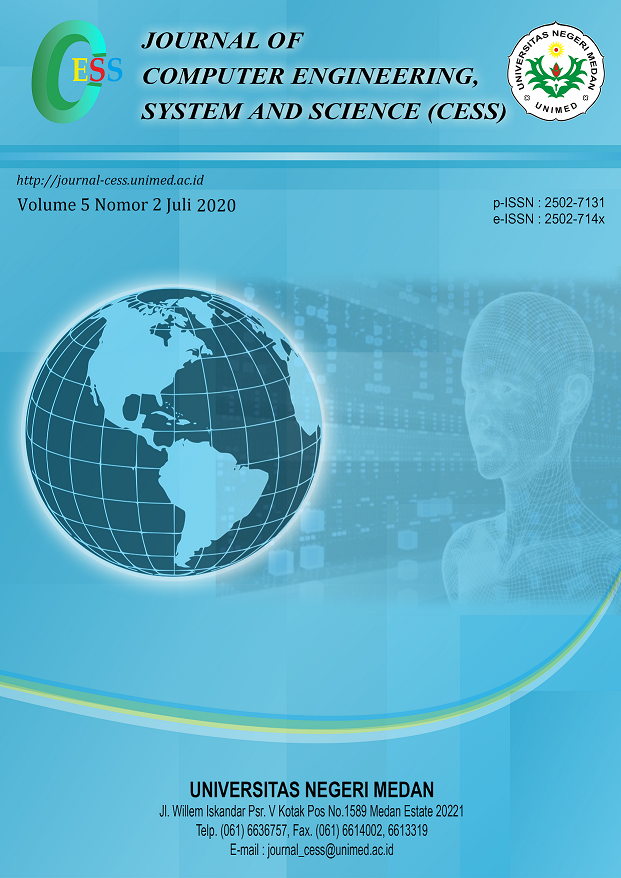Teknologi Blended Learning Mahasiswa Di Kota Batam Dengan Metode Unified Theory Of Acceptance And Use Of Technology
DOI:
https://doi.org/10.24114/cess.v5i2.18209Keywords:
Blended Learning, Unified Theory of Acceptance and Use of Technology, LearningAbstract
In improving the education and teaching process by lecturers in tertiary institutions, learning is carried out using Blended Learning technology. Blended learning is a collaboration and / or a combination of learning that has a traditional nature (learning by doing face-to-face) and learning by utilizing technology or what is referred to as e-learning. The application of Blended Learning technology in universities in Riau Islands province has been carried out in several universities in the city of Batam. Previous research states that there are problems in the application of Blended Learning technology. This study examines how the Acceptance of Blended Learning Technology by Students in the city of Batam with the Unified Theory of Acceptance and use of Technology (UTAUT) method. In carrying out this research activity a quantitative approach is used with a causalistic explanatory research research design. The results of this study reveal that business expectations, performance expectations, social influence, and facility conditions together affect the independent variable Blended Learning Technology Acceptance. This shows that the overall acceptance of Blended Learning Technology among students has been well receivedDownloads
References
H. Budiman, œPeran Teknologi Informasi dan Komunikasi Dalam Pendidikan, Al-Tadzkiyyah: Jurnal Pendidikan Islam, pp. 75-83, 2017.
T. d. P. T. Kementerian Riset, œGrafik Jumlah Mahasiswa Aktif Berdasarkan Jenis Kelamin, 11 Des 2019. [Online]. Available: forlap.ristekdikti.go.id/mahasiswa/homegraphjk.
T. d. P. T. Kementerian Riset, œGrafik Jumlah Dosen Aktif Berdasarkan Jenis Kelamin, 11 Desember 2019. [Online]. Available: forlap.ristekdikti.go.id/dosen/homegraphjk.
C. I. WIPO, œ2019 Report, 11 December 2019. [Online]. Available: www.globalinnovationindex.org/gii-2019-report.
W. Yuwono, œPerancangan Model Framework Manajemen Strategik Planning Sektor Pariwisata Di Provinsi Kepulauan Riau, Journal of Accounting & Management Innovation, pp. 14-25, 2018.
Akhirman, œAnalisa Pengelolaan Sektor Pariwisata Terhadap Pertumbuhan Ekonomi Di Kepri Tahun 2015-2016, Jurnal Bahtera Inovasi,, pp. 104-110, 2019.
A. Hendrayady, œStrategi Pembangunan Wilayah Perbatasan Provinsi Kepulauan Riau, Jurnal Ilmu Administrasi Negara, pp. 1-10, 2018.
Sinarti, D. Karikasari, B. Hendrawan dan A. Wibowo, œPengukuran Tingkat Daya Saing Kabupaten/Kota Di Provinsi Kepri, Jurnal Akuntansi, Ekonomi dan Manajemen Bisnis, pp. 179-190, 2018.
Suwarno dan Hendi, œAnalisis Pengaruh Blended Learning dan Sertifikasi Terhadap Kompetensi Mahasiswa, Computer Based Information System Journal, pp. 1-8, 2018.
N. M. Noh, N. Abdullah, W. K. Teck dan MahizerHamzah, œCultivating Blended Learning in Teaching and Learning: Teachers™ Intrinsic and Extrinsic Readiness in Malaysia, International Journal of Academic Research in Progressive Education & Development, pp. 257-265, 2019.
A. AlKhaleel, œThe Advantages of Using Blended Learning in Studying English as a Foreign Language at the University of Tabuk, Modern Journal of Language Teaching Methods, pp. 1-7, 2019.
V. Venkatesh, M. G. Morris, G. B. Davis dan F. D. Davis, œUser Acceptance of Information Technology: Toward a Unified View, MIS Quarterly, pp. 425-478, 2003.
U. Seeland, A. T. Nauman, A. Cornelis, S. Ludwig, M. Dunkel dan G. Kararigas, œeGender-from e-Learning to e-Research:a Web-Based Interactive Knowledge-Sharing Platform for Sex- and Gender-Specific medical Education, Biology of Sex Differences, pp. 83-91, 2016.
A. R. Ismail, T. S. T. Shahdan dan A. Yulia, œA Review of Blended Learning for Education, International Journal of Scientific and Research Publications, pp. 145-148, 2019.
Y. Todaka, œModified Blended Learning: De-motivated Japanese College EFL Learners Sustain Motivation to Improve English Listening Skills, International Journal of Innovation and Research in Educational Sciences, pp. 263-284, 2019.
A. A. Taiwo dan A. G. Downe, œThe Theory of User Acceptance and Use of Technology (UTAUT): A Meta-Analytic Review of Empirical Finding, Journal of Theoretical and Applied Information Technology, pp. 48-58, 2013.
V. Venkatesh, J. Y. L. Thong dan X. Xu, œUnified Theory of Acceptance and Use of Technology: A Synthesis and the Road Ahead, Journal of the Association for Information System, pp. 328-376, 2016.
Sugiyono, Metode Penelitian Manajemen, Bandung: Alfabeta, 2014.
T. d. P. T. R. I. Kementerian Riset, Buku Lanskap Ilmu Pengetahuan dan Teknologi Indonesia 2017, Jakarta: Kementerian Ristekdikti RI, 2017.
P. Apriliani, I. R. Husen dan D. Hilmanto, œThe Influence Of Asynchronous Blended Problem-Based Learning On Retention And Learning Motivation Of Midwifery Students, Jurnal Pendidikan Kedokteran Indonesia, pp. 91-96, 2019.
V. S. Chouhan dan S. Srivastava, œUnderstanding Competencies and Competency Modeling • A Literature Survey, IOSR Journal of Business and Management, pp. 14-22, 2014.
R. Nagarajan dan R. Prabhu, œCompetence and Capability - A New Look, International Journal Of Management, pp. 7-11, 2015.
A. Kiyani, S. Liaqut dan M. A. Chuadhry, œImpact of Professional Competency Of Academia On Academic Achievement Of Student At Higher Level, International Journal of Technical Research and Applications, pp. 21-27, 2014.
I. L, œEvaluasi Dalam Proses Pembelajaran, Jurnal Manajemen Pendidikan Islam, pp. 920-935, 2019.
S. Crowe, K. Cresswell, A. Robertson, G. Huby, A. Avery dan A. Sheikh, œThe Case Study Approach, BMC Medical Research Methodology, pp. 2-9, 2011.
T. D. P. T. KEMENTERIAN RISET, œGrafik Jumlah Mahasiswa Aktif Berdasarkan Kelompok Bidang, 17 Desember 2019. [Online]. Available: https://forlap.ristekdikti.go.id/mahasiswa/homegraphbidang.
T. Jihad, E. Klementowicz, P. Gryczka, C. Sharrock, M. Maxfield, Y. Lee dan J. K. Montclare, œPerspectives On Blended Learning Through The On-Line Platform, Lablessons, For Chemistry, Journal Of Technology And Science Education, p. 1, 2018.
Downloads
Published
How to Cite
Issue
Section
License
Copyright (c) 2020 Computer Engineering, Science and System Journal

This work is licensed under a Creative Commons Attribution 4.0 International License.















